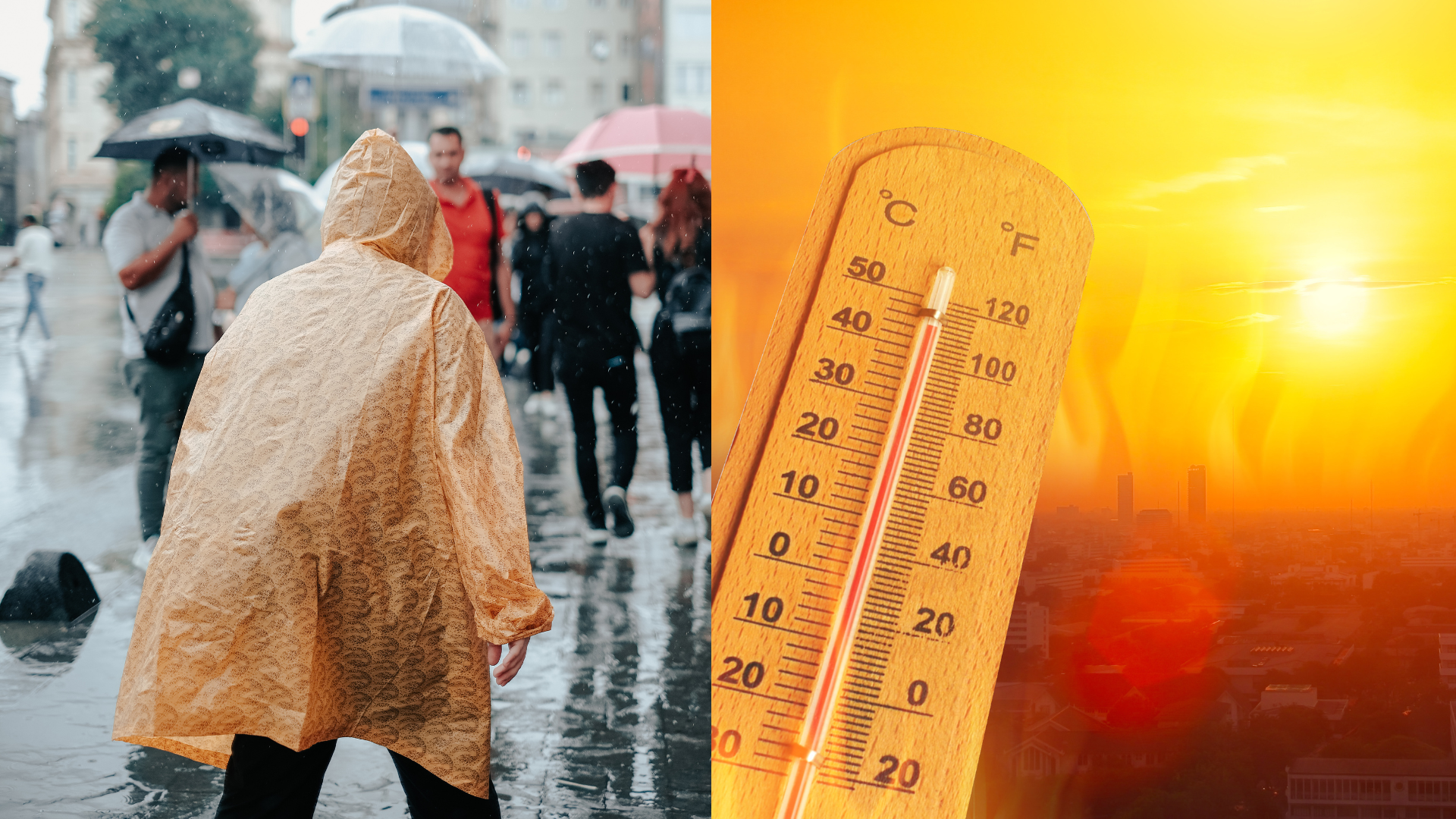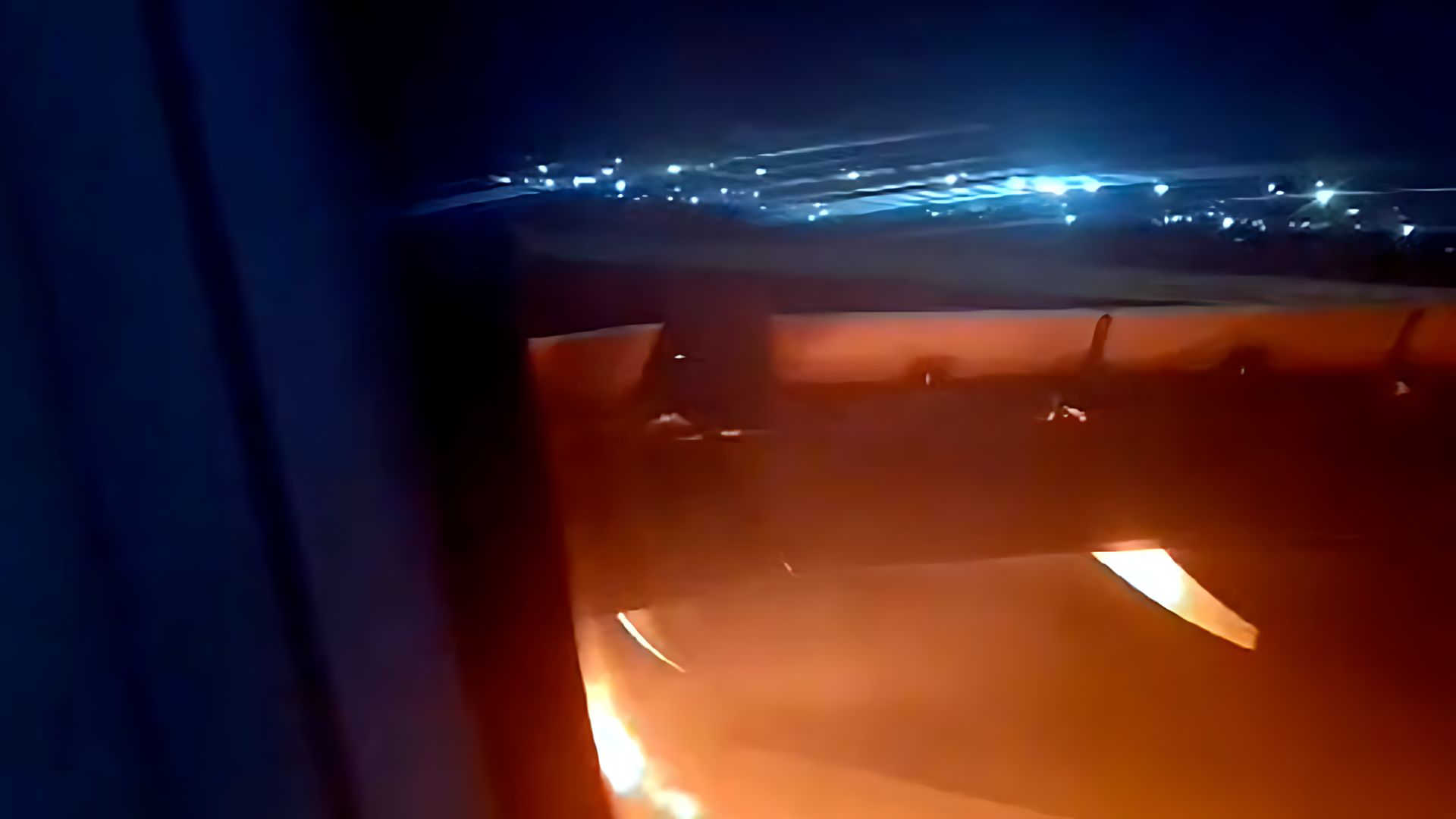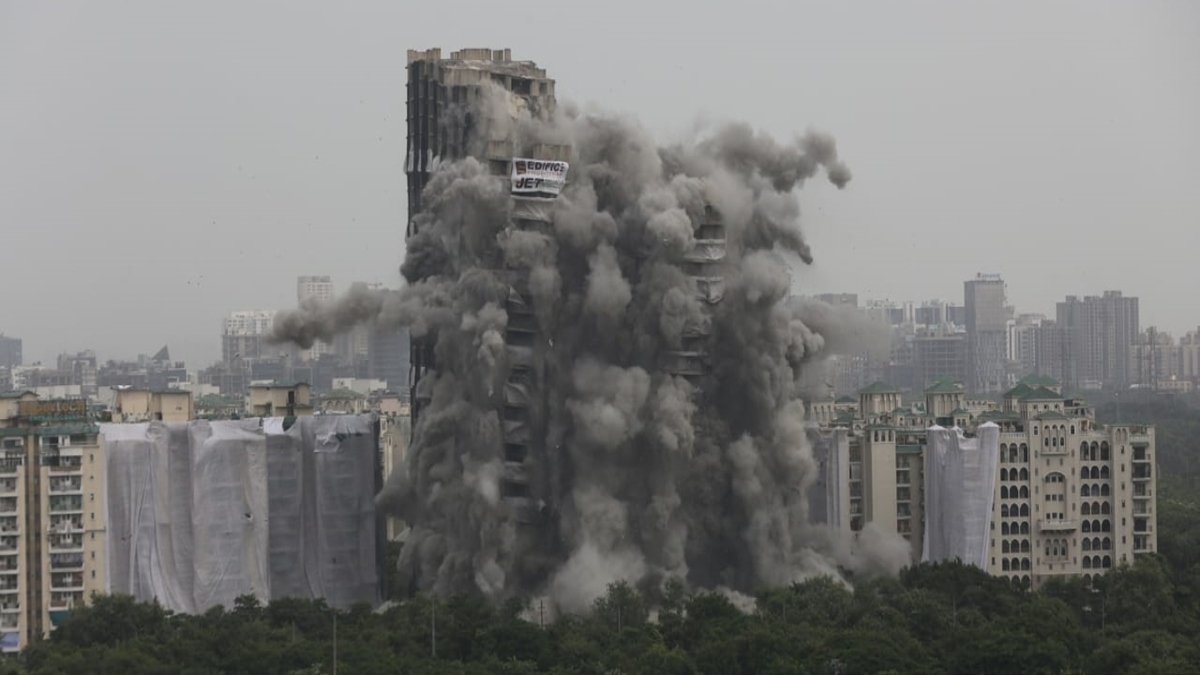










Due to favourable wind direction, the dust generated by the demolition of the Supertech twin towers in Noida on Sunday did not make its way across the border to Delhi. Experts believe the dust was blown towards Greater Noida and further into Uttar Pradesh by north and northwesterly winds rather than towards the national capital.
The demolition also had little effect on the air quality in Noida, which experts said was “within acceptable limits.”
The Noida Authority was constantly monitoring the air quality following the demolition, while agencies on the scene used anti-smog guns to combat the dust generated by the explosions. According to reports, the dust has settled in the area, and the safe distance from the rubble has been reduced to just a few feet.
HOW MUCH DEBRIS WAS CREATED? HOW WILL IT BE MANAGED?
According to reports, the demolition of the Apex (32 storey) and Ceyane (29 storey) left approximately 35,000 cubic metres of debris.
Approximately 1,200 to 1,300 truckloads of debris would need to be removed from the site. In Sector 80, the Noida Authority operates a construction and demolition waste management plant with a capacity of 300 tonnes per day. However, it is unclear whether the rubble that would be removed would be processed there, according to the media sources.
According to officials, none of the debris will be thrown away. The demolition is expected to yield 4,000 tonnes of iron and steel, which the Edifice intends to use to recoup some of the demolition costs.
LOSS INCURRED BY SUPERTECH DUE TO DEMOLITION
The Noida Supertech twin towers, cost Rs 933 per square foot (sq ft) to build and have a total built-up area of 7.5 lakh sq ft, totaling Rs 70 crore. However, demolishment is an expensive process that necessitates a large amount of explosives, manpower, and equipment.
One of the twin towers (Apex and Ceyane) is 103 metres tall, while the other is around 97 metres tall. The demolition cost for the twin towers in Noida’s Sector 93-A is estimated to be around Rs 267 per sq ft. The total demolition cost, including explosives, will be around Rs 20 crore, based on the total built-up area of about 7.5 lakh sq ft.
In the Supertech Emerald Court Project, one 3BHK apartment cost approximately Rs 1.13 crore. The two buildings contained approximately 915 flats, which would have earned the company approximately Rs 1,200 crore.
Approximately 633 of the total 915 flats were booked, and the company collected nearly Rs 180 crore from homebuyers. Supertech has now been ordered to refund the homebuyers’ money with a 12% interest rate.
Supertech is paid about Rs 5 crore of the total cost, and the remaining Rs 15 crore will be realised by selling the debris, which will be about 55,000 tonnes, including 4,000 tonnes of steel.
In addition, Edifice Engineering, the company responsible for bringing the buildings down, has secured a Rs 100-crore insurance cover for any damage in the surrounding area, if any. Around 3,700 kgs of explosives brought from Palwal (Haryana) will be used for the demolition. It will contain dynamite, emulsions, and plastic explosives.
Towers will be brought down using the waterfall implosion method, and the buildings will collapse inward. This will leave 55,000 tonnes of debris, or 3,000 trucks, to be dealt with. Surprisingly, clearing the debris will take about three months.
Read more: NewsX Exclusive: Noida’s 300-ft-high Supertech twin towers demolished; video surfaces









